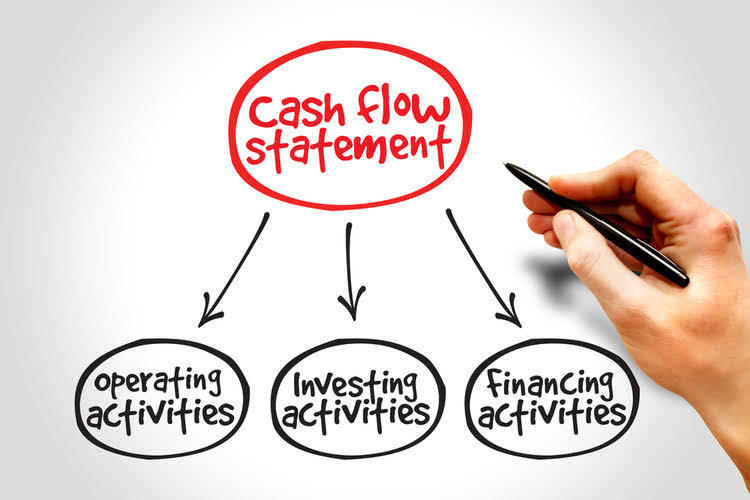Content

Thereafter total of debit and credit money columns of a trial balance is calculated. Agreement of trial balance is the conclusive evidence of the accuracy of the ledger and trial balance.
We’re here to take the guesswork out of running your own business—for good. Your bookkeeping team imports bank statements, categorizes transactions, and prepares financial statements every month. Using information from the asset, liability and equity accounts in the trial balance, you can prepare a balance sheet. Using information from the revenue and expense account sections of the trial balance, you can create an income statement.
What Is A Trial Balance?
If your debit and credit columns are equal to each other, you can close the trial balance worksheet for that accounting period. If they do not equal one another, you will need to find the error in your ledger. To prepare a trial balance, you will need the closing balances of the general ledger accounts. The trial balance is prepared after posting all financial transactions to the journals and summarizing them on the ledger statements. The trial balance is made to ensure that the debits equal the credits in the chart of accounts.

If the error remains, return to the journal and verify that each transaction is posted correctly. Such a summary helps you to locate journal entries in the original books of accounts. For instance, your company’s trial balance sheet provides an audit trail to the auditors. This helps them to carry out the audit of your financial statements. They are thus able to provide their comments with regards to the financial statements so prepared in the audit report. There are three columns in unadjusted trial balance- the first one is account names, the second is debit, and the third one is credit.
How To Use The Trial Balance
Add titles to the fifth and sixth columns of the worksheet, which are for adjusting debits and adjusting credits. These adjustments are usually for accrual entries to either defer or accelerate the recognition of expenses. After filling out each column, you will then need to find the total of the columns. If your company’s ledgers are correct, the totals of the credit and debit columns will be equal. Once the errors are located, adjusting entries are posted to the trial balance. Once this is done, the trial balance is considered an adjusted trial balance. Add up the amounts of the debit column and the credit column.
Once you’ve double checked that you’ve recorded and added up all of your transactions properly, it’s time to make adjusting entries. The accounting cycle is a multi-step process designed to convert all of your company’s raw financial information into usable financial statements. Journal entries are usually posted to the ledger on a continuous basis, as soon as business transactions occur, to make sure that the company’s books are always up to date.
Determining The Accuracy Of Ledger Accounts
A trial balance sheet is a report that lists the ending balances of each account in the chart of accounts in balance sheet order. Bookkeepers and accountants use this report to consolidate all of the T-accounts into one document and double check that alltransactionswere recorded inproper journal entry format. The next step is to prepare the trial balance worksheet by creating three separate columns. One column should be the names of each ledger account and the other two columns should be for the debit and credit balances of each account. ABC CompanyUnadjusted Trial BalanceFor the year ended December 31, 2019Three columns are used while preparing an unadjusted trial balance. One column is used to show the account names, second column is used to show all the debit balances, and third column shows credit balances. Besides this, it also shows the adjustment entries in case there are any.
Federal judge tosses Black defendant’s bias claim in Erie riot case over fire at Ember + Forge – GoErie.com
Federal judge tosses Black defendant’s bias claim in Erie riot case over fire at Ember + Forge.
Posted: Wed, 01 Dec 2021 17:35:49 GMT [source]
A trial balance lists the credit or debit balance of each account in a company’s general ledger. It’s helpful in finding possible mistakes in the accounting process. Just in case the mistakes occur since the entry in the ledgers, and you cannot detect them at that time. The following are examples of adjusted and unadjusted trial balances.
Preparing Trial Balance From Journal And Ledger How To
As a result, a total of debit balance of ledger accounts becomes equal to the total credit balance of ledger accounts. A trial balance may be defined as a statement of debit and credit balances extracted from the ledger with a view to testing the arithmetical accuracy of the books. Accountants of ABC Company have passed the journal entries in the journal and posts the entries in to their respective ledgers. He then took all the balances of each account in the Ledger and summarized them in an unadjusted trial balance which is as follows.
Transferring information from T-accounts to the trial balance requires consideration of the final balance in each account. If the final balance in the ledger account (T-account) is a debit balance, you will record the total in the left column of the trial balance. If the final balance in the ledger account (T-account) is a credit balance, you will record the total in the right column.
Introduction To Unadjusted Trial Balance
Further, your trial reveals the unadjusted and adjusted balances of various ledger accounts. You need to make adjustment entries in case of any accounting errors, as stated above.
After you finish entering all of the balances from your ledgers, you will need to add them up to ensure that both the debit and credit columns balance. The purpose of a trial balance is to ensure that all debit transactions entered into the general ledger equal all of the credit transactions that have been entered.
What is the balance sheet formula?
The balance sheet is one of the three fundamental financial statements. … It can also be referred to as a statement of net worth or a statement of financial position. The balance sheet is based on the fundamental equation: Assets = Liabilities + Equity.
Furthermore, the assets and liabilities have to be listed in order of liquidity, which refers to how quickly an asset can be converted to cash to pay off liabilities. Besides ledger balances, cash balance and bank balance of cash book of that particular date are also included in the trial balance. Next accounts to include in the trial balance relates to income statement. Thus, you must treat the amount spent on any addition made to the land and building as a capital expenditure. However, you may wrongly treat it as a revenue expense if you debit the maintenance and repairs account with such an amount.
You need to adjust accounting entries to prepare financial statements. And, you need financial statements to make decisions about your business, secure funding, and more. If your debits and credits are unequal, you must find ways to balance the accounts. You could have unequal debits and credits as a result of incorrectly posting accounting entries, forgetting to record an account, or miscalculating. Preparing a trial balance is the initial step in preparing the basic financial statements. These statements include trading and P&L accounts and the balance sheet of your company. However, you must note that simply tallying the trial balance accounts does not mean that your accounts are accurate.
Although you can prepare a trial balance at any time, you would typically prepare a trial balance before preparing the financial statements. The trial balance lists every open general ledger account by account number and provides separate debit and credit columns for entering account balances. The Greener Landscape Group’s trial balance for April 30,20X2 appears below. In a double entry accounting system, all transactions are recorded using debits and credits. Whenever a journal entry is made, the total debit amount must match the total credit amount. A trial balance is a summarization of all journal entries made, aggregated by account. The result is a report that shows the total debit or credit balance for each account, where the grand total of the debits and credits stated in the report sum to zero.
The debit side and credit side of ledger accounts are added up. The total of the debit side is placed in the debit column and the total of the credit side in the credit column of the trial balance. The total of the debit column and credit column should be the same. The final balance from the ledger needs to be properly placed on the debit and credit column while preparing the trial balance, to make sure the accounting process is correct. Final step is to add both the debit and credit columns of the trial balance. If there is any discrepancy, it means that either you may not have picked up correct balances from Ledger or there is any mistake in recording the transaction in Journal.
According to double entry system every transaction is recorded in journal debiting one account and crediting the other for the same amount of money with an explanation. It is worth mentioning here that assets have debit balances so the amounts related to assets will be included in the second column of the trial balance related to debit balances. You should prepare trial balance reports at the end of each reporting period. This ensures that your books are accurate and updated, which could save you from audits and penalties.

The balance sheet is one of the three fundamental financial statements. The financial statements are key to both financial modeling and accounting.
Business transactions are first recorded in the journal and thereafter these are posted in the ledger under different heads of accounts. To prepare a trial balance, first, we need to know to make sure the transactions are journalized and have been posted to ledgers. The statement contains all kinds of accounts, irrespective of their classifications, such as assets liabilities, income-expenses etc. Liabilities and equity have credit balances and so their balances are included in the third column related to credit balances. After including all the assets, then liabilities and stockholders’ equity accounts are included in the trial balance. An unadjusted trial balance is prepared using either a sheet of paper or a spreadsheet program. Title provided at the top shows the name of the entity and accounting period end for which the trial balance has been prepared.
- The agreement of the debit and credit columns of a trial balance does not stand as conclusive proof of correctness.
- First of all, a trial balance will only confirm that the total of all credit balances matches the total of debit balances.
- You could have unequal debits and credits as a result of incorrectly posting accounting entries, forgetting to record an account, or miscalculating.
- Creating a trial balance sheet and making sure the debit and credit columns are equal are two necessary steps toward drafting an accurate financial statement.
- Such as Profit and Loss Account, Balance sheet, etc. by using trial balance.
- Business transactions are first recorded in the journal and thereafter these are posted in the ledger under different heads of accounts.
Therefore, there can be accounting errors that you need to identify. In the trial balance accounting, such accounting errors can be classified into four categories. Thus, you use the trial balance to achieve various purposes. So, let’s try to understand the uses of the trial balance sheet. We’ll do one month of your bookkeeping and prepare a set of financial statements for you to keep. It does this by recording every transaction your business makes twice.
Using the ledger accounts mentioned in this description of the standard form of ledger accounts, an example of a trial balance is shown below. Financial StatementsFinancial statements are written reports prepared by a company’s management to present the company’s financial affairs over a given period . A company’s transactions are recorded in a general ledger and later summed to be included in a trial balance. Debits and credits of a trial balance being equal ensure there are no mathematical errors, but there could still be mistakes or errors in the accounting systems. The first step in finding an error is to add the credit and debit columns again to check your math. If they still don’t add up, then subtract the smaller column from the larger and look for the missing amount in the smaller column.
No More Sandwich of Shame: First Lady, Donors Wipe Out Wyoming’s School Lunch Debt – Cowboy State Daily
No More Sandwich of Shame: First Lady, Donors Wipe Out Wyoming’s School Lunch Debt.
Posted: Wed, 01 Dec 2021 22:27:14 GMT [source]
Bookkeepers typically scan the year-end trial balance for posting errors to ensure that the proper accounts were debited and credited while posting journal entries. Internal accountants, on the other hand, tend to look at global how to prepare a trial balance trends of each account. For instance, they might notice that accounts receivable increased drastically over the year and look into the details to see why. They keep your business legal and away from auditing trouble.
Record the totals of all of the ledger accounts that have been used during the period that you’re preparing the trial balance for. Remember each of the five account types; Assets, Liabilities, Income, Expenses, and Revenue, and post the balances accordingly. For example, if you have a positive balance in an asset account, it would be posted in your trial balance as a debit, while a positive revenue balance would be posted as a credit. Before you can make a trial balance, you will need to determine the closing balances of all accounts you have on your ledger. The balance is the difference between the total credits and the total debits of an account. Common ledger accounts include inventory, utilities, loans, rent and wages.
Author: David Ringstrom



